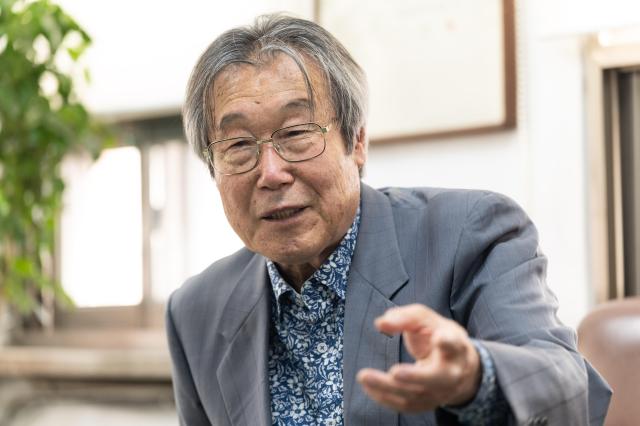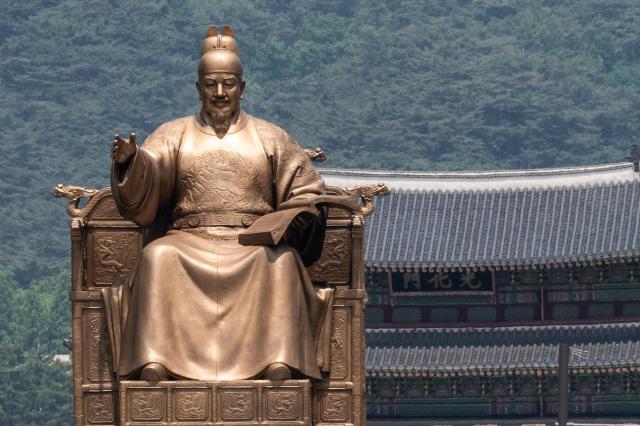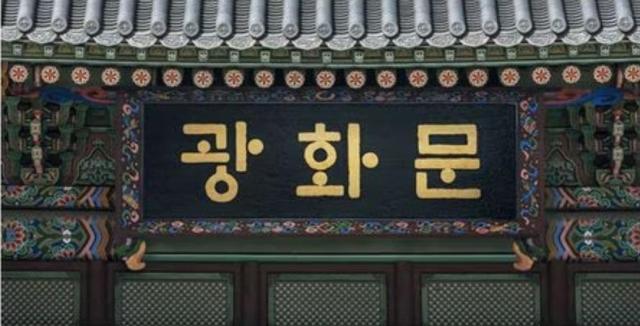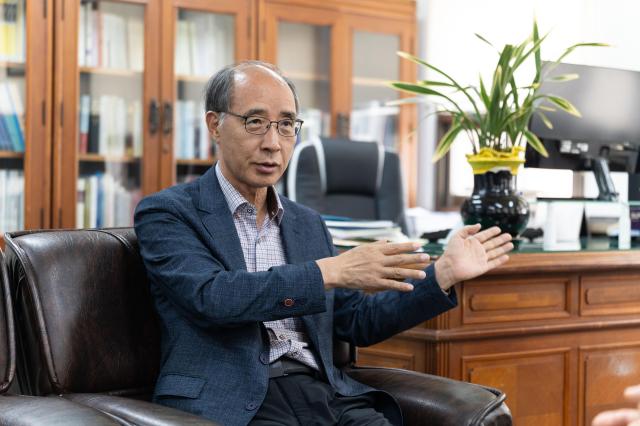
SEOUL, May 19 (AJU PRESS) - The iconic signboard of Gwanghwamun, the main gate of Gyeongbokgung Palace in central Seoul, has once again become the center of a long-held debate, with scholars advocating for the use of Hangeul, the Korean alphabet.
The controversy has resurfaced last week after Minister of Culture, Sports and Tourism Yu In-chon expressed support for the Korean-written signboard during an event marking the 627th birth anniversary of King Sejong the Great, the inventor of Hangeul.
Scholar Lee Dae-ro and Kim Ju-won, chairman of the Korean Language Society, argue that the signage should be written in Korean, urging the urgent replacement of the current one bearing Chinese characters.
They emphasize its symbolic significance as the entrance to the birthplace of the Korean alphabet. Jiphyeonjeon or Hall of Worthies, a research institute established by King Sejong and crucially involved in the invention of Hangeul, used to be there in the compound of the royal palace.

Gwanghwamun, a cherished symbol of Korea's cultural heritage, stands proudly as not only Seoul's historical landmark but also one of the most frequented tourist attractions in the capital. But the presence of the Chinese-written signboard near the statue of King Sejong who created Hangeul, appears absurd, being an eye sore for many Koreans.
"Gwanghwamun, as the face of Korea, holds significant cultural importance for both foreigners and Koreans," Lee insisted. "It's shameful to see [Chinese] characters, which are rarely used these days" in such a prominent location with historical significance.

Throughout the vortex of the country's turbulent history, the royal palace has undergone several destructions and reconstructions over time. Originally built in 1395, it was burned down during the Japanese invasions of Korea in 1592. It underwent reconstruction in 1865, but was destroyed again during the Korean War. In 1968, a Korean signboard handwritten by former strongman Park Chung-hee was put up, but it did not endure for long. In 2010, it was replaced with a Chinese-written plaque, following the Cultural Heritage Committee's recommendation to restore it to its original state.
Advocates for Hangeul including the two scholars propose a new signboard featuring the original archaic versions of Korean letters used in 1446 when it was widely distributed throughout the country, three years after the invention of Hangeul.

They stress the importance of properly promoting Korean historical assets while preserving their values and meanings, especially as Korea and its vibrant culture gains global attention.
Kim said, "When it comes to the Korea's main landmark, there is no room for disagreement" regarding whether the signboard's characters should be in Korean or Chinese. "Gwanghwamun is a place that comes first to mind for people around the world, and Hangeul is the nation's symbol, so the choice is clear," he added.
Copyright ⓒ Aju Press All rights reserved.
